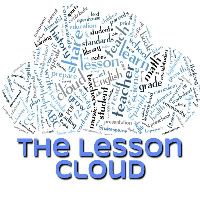So where do you even start with good novel studies?
1.) Picking the right book is the key to the whole thing. I'm not sure I believe the SAME book every year is the answer. Your students change, you change, the world changes, and sometimes a book that worked well with one class may not be the answer to a different group of students. Let your students lead you! Here are some great sites for a large list of novels out there for particular grade levels. (Click on images to see sites).

 2.) Read the book ahead of time! I hate to even admit that I fell into this trap ONCE and ONLY ONCE. That was all it took. I was basing my novel choice on what a fellow teacher friend of mine suggested. Hindsight reveals: Her taste and my taste were very different, and what was "appropriate" for her students and mine ended up being on opposite ends of the spectrum. Lesson learned. Besides, if you really want to dive into the book with close reads of challenging parts of the text, develop a keen sense of the author's intent, know what questions to ask, and truly understand the message behind the book itself, it's imperative that you read it! I love this testimony from a teacher who had done novel studies before, but embraced this vision of doing a novel study, and doing it well, which called for some increased prep time. In the end, it was worth it! (Click on the Stacey Joy video).
2.) Read the book ahead of time! I hate to even admit that I fell into this trap ONCE and ONLY ONCE. That was all it took. I was basing my novel choice on what a fellow teacher friend of mine suggested. Hindsight reveals: Her taste and my taste were very different, and what was "appropriate" for her students and mine ended up being on opposite ends of the spectrum. Lesson learned. Besides, if you really want to dive into the book with close reads of challenging parts of the text, develop a keen sense of the author's intent, know what questions to ask, and truly understand the message behind the book itself, it's imperative that you read it! I love this testimony from a teacher who had done novel studies before, but embraced this vision of doing a novel study, and doing it well, which called for some increased prep time. In the end, it was worth it! (Click on the Stacey Joy video).3.) Value the work your students will do WITH the novel itself. If you plan activities that you simply intend to grade, return, and never do a thing with, that might be the same enthusiasm you are met with from your students. They'll do it, turn it in, and throw it away when it's returned. If the work they will do is treated as a BIG DEAL and something above and beyond special, that's what you'll get from them...above and beyond. Consider creating a space for your novel study items...bulletin boards, author's corner, showcase spaces in the library or halls, decorate doorways, etc. I just started a Pinterest board on Novel Studies where I'm on the prowl for some creative ways to do novels. I'm also looking for collaborative pinners on that board, so if you're interested, PLEASE let me know! email: nomonkeybusinessmichelle@gmail.com Be sure to grab some ideas from some of those incredible classrooms! (Click on Pinterest board to get there).
Here's a FREEBIE activity to try with your next novel study on SUMMARIZING. (Click image to grab). Challenge your students to a MONEY SUMMARY CHALLENGE! It's harder than you think!! (Even for adults)! You assign each WORD students write in their summary a specified money amount. (Example: .05 cents per word) Then give students a dollar amount RANGE to keep their summary within. (Example: "Write a summary that is worth between $4.00-5.00." Several things get accomplished with this activity:
a.) Students search to include the IMPORTANT stuff in their summary so they get it all in.
b.) Students sometimes have to get rid of unnecessary information to make it fit in the range and/or have to add MORE to make it fit.
c.) You're incorporating some math skills into your reading and writing! *Be sure to challenge them with an appropriate money amount! I might not assign 5th or 6th graders with 10 cents a word. It's too easy for them to count! Make that part challenging as well!
d.) Try it in groups! The old saying "two heads are better than one" is often true. With an activity like this, students work together to discuss key events in the novel, what to include or eliminate, and have to perform as a team to complete a task.

If you enjoy the freebie, be sure to check out where it comes from...a reading strategy novel study interactive notebook that give students an opportunity to apply 17 reading strategies (characterization, setting, plot, theme, author's intent, style, vocabulary, connections, timeline, figurative language, symbolism, text features, summary, etc.) to the book they're involved in...ALL with folding and flip-flap fun! (Click on image to check out the unit).
Finally, HAVE FUN with your novel! You never know when a book can change a child's life. Thankful for a teacher who MADE ME READ a book with my classmates. It sparked my love for reading!
Bananas for this quote! We teachers have JUST as much fun reading books with kids!























































